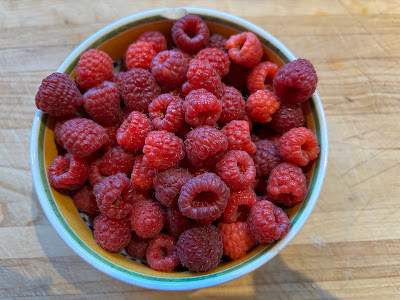 |
NATURAL PHENOMENA
The usual and obvious signals of fall begin appearing as early as late August in some locations. If you want to see some early color you would have to traverse one of the Gaps, like App (Appalachian) Gap which takes you to 2,375 feet, Lincoln Gap to 2,424 or Middlebury Gap at 2,144. Lincoln Gap, by the way, is the most interesting of the three in that it rises 1,800 foot in a short time with maximum grades of 24 on the western side, steep and narrow both.
Besides touches of color, there are plenty of other indications of the end of summer. The hummingbirds are already gone.
 |
| The dark spots are dead ants |
They had a feeding frenzy during much of August, but their numbers became sparse by Labor Day weekend. I saw only one at a feeder that weekend, instead of the usual dozen or more. Not at the same time, although maybe a mate will share. Even though the feeders can accommodate four or five they are territorial and reluctant to share. Reluctant is an understatement. Sometimes one hummer will claim both feeders at the same time. After Labor Day all that was left was the dregs–some leftover nectar and the bodies of ants lured by the sugar. Hummingbirds don't seem to mind sharing with ants.
 |
| Picking up the hay the older way. |
The field were still muddy in some places so the mowers left tracks. Still, they got mowed.
 |
| Turkey vultures were all over after the mowing. There's always carnage after a mowing. |
Perhaps because of the frequent rain this summer or despite it, or maybe for some other reason, my apple trees, usually phlegmatic, have turned out to be surprisingly productive. One of the apple trees hadn't produced a single apple for years until the past two when it managed five or so. No one I've consulted has an explanation. Why the raspberry patch was so prolific this year is also a mystery. Somehow or other everything was just right.
 |
| Some branches are weighted down nearly to the ground |
 |
| In the past the apples were all misshapen |
 |
| Just one morning's picking |
UNNATURAL PHENOMENA
Alas, also kicking off in September is bear hounding (hunting) season. It ends in mid-November. Bears don't get much of a break here. One kind of hounding ends and another begins. That's followed by regular (no hounds) bear hunting which doesn't end until mid-December. In truth, bear hounding begins in June when hounding training starts. For the bears there is no real difference between the hounding training and the hounding hunting seasons since bears are chased, attacked, and treed. The trauma may be the same for both seasons, the one difference is they don't get shot at after being treed in training season. A couple of years ago I asked Vermont Fish & Wildlife bear specialist Forrest Hammond why bear hound training (during which dogs hound bears) is so prolonged. Hmm, he said, he really couldn't think of the reason. By the time hunting season is over bears have had very little time to live without being harassed.
 |
| Photo from Protect Our Wildlife |
Ironically, hunters who use hounds are a very small subset of hunters in Vermont. A tiny subset, in fact. There are not many Vermonters who support hounding. Yet it has its support where it matters most, with the Fish & Wildlife Commission.
Here is information from Protect Our Wildlife, an wildlife advocacy organization that lobbies against houndings and other important wildlife issues:
"Vulnerable bear cubs are separated from their mothers during these chases that start on June 1st. June is a very lean month for bears as they have not been able to recover from their long winter slumber. Bears lose vital fat reserves and calories when they are chased through the woods all in the name of "recreation." Bears are also at great risk of hyperthermia, which is a real threat during the high heat of summer when they are run for miles by hounds. Vermont hounders have bragged about their hounds chasing a lone bear for six hours until the exhausted animal gave up. Other evidence collected by Protect Our Wildlife depicts bear hound hunters sharing that mother bears turned to fight the hounds while trying to protect cubs."
The hounds have electric collars that let handlers (hunters) track them. While the dogs have apparently been trained, they don't always know the difference between bears and other animals, and sometimes not even humans. Plenty of local incidents testify to that. Often hounds get well ahead of their trackers. If you've ever chased after a dog, this is not hard to imagine. In 2019 a couple and their dog were severely attacked here in Ripton by hounds that had gotten well ahead. Just this week a man walking his dog was attacked in Cornwall. Hounds run over posted lands, private lands, public lands. There are no realistic boundaries.
 |
| Photo from Protect Our Wildlife |
And then there are the coyotes, already vulnerable year round. From December 15 through March 31 they too can be hunted with hounds. This is an ugly uptick from what is still standard hunting rules in this state, allowing coyotes to be hunted at any time during the year as it is, and killed in any manner whatsoever. Kind of like putting them in the same category as, say, rats.
SAVING WILDLIFE (on a good note!)
 |
| The owl in question, now in rehab. Here's lookin' at you! |
No comments:
Post a Comment